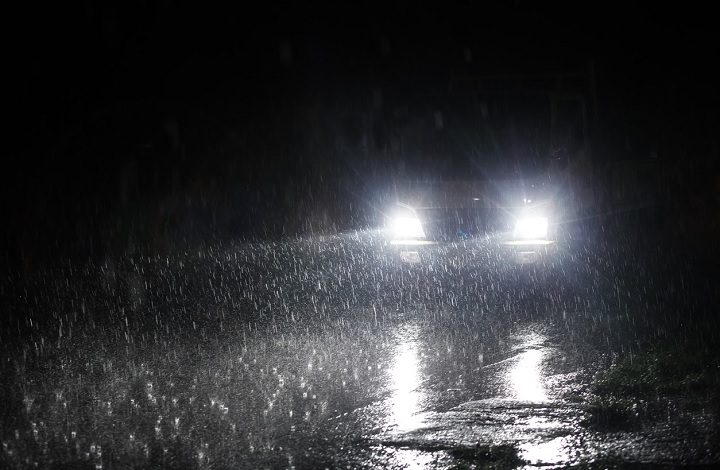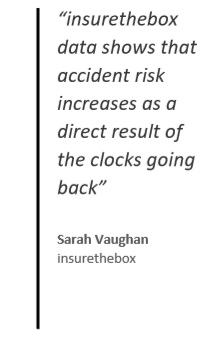
People driving home from work are 34% more likely to be involved in a collision after the clocks go back, new telematics analysis suggests.
The analysis, based on insurethebox claims data, suggests that male drivers are ‘most at risk’ after the clock change with a 37% increase in collisions between the hours of 5-8pm – compared to a 30% increase among female drivers.
Geographically, drivers in Scotland have the highest increase in collision risk (50%), followed by Lancashire/Yorkshire (49%) and other northern counties (46%).
 Only drivers in London (33%), the east of England (30%), the west (26%) and the Midlands (25%) recorded a lower collision risk increase than the national average of 34%.
Only drivers in London (33%), the east of England (30%), the west (26%) and the Midlands (25%) recorded a lower collision risk increase than the national average of 34%.
insurethebox says young drivers are likely to be more vulnerable than more experienced drivers – especially if it is their first time driving in wintry conditions since passing their test.
Sarah Vaughan, head of pricing at insurethebox, said: “insurethebox data shows that accident risk increases as a direct result of the clocks going back.
“For many young drivers, the evenings after the clock change will be their first experience of driving in the dark, coping with different conditions like reduced visibility.
“insurethebox holds over 4bn miles of driving data accumulated over nearly 10 years, and this extensive dataset means we can spot trends.
“As the clocks change this weekend, we are highlighting our findings to encourage all motorists to be mindful of the lower visibility and watch out for wet weather.”
For years, road safety organisations have campaigned for change, arguing that one of the consequences of the current system is that more people are killed and injured on roads during darker evenings in the autumn and winter.
Earlier this week, a number of road safety charities – including IAM RoadSmart – reignited the debate about the impact of the current system on road safety.
The road safety charity is calling on the Government to scrap the practice in order to cut the number of young children injured in road crashes on their way home from school over the winter months.
I suppose one can say that under normal GMT time the hours of darkness would proceed slowly at a rate of two minutes per day and so as the nights get longer, dusk and dark comes earlier but slowly.. by just 2 minutes per day and therefore one expects that drivers would get used to that.
Instead with the clocks changing by 60 minutes all in one day its dark an hour earlier than the day before and from almost dusk lighting drivers are confronted by night time driving.
This actually coincides more with the schools coming out times [ an increase of some 95% of normal road traffic at school closing times] and should not be anything that influence those working till 5 or 6 pm and driving home in the dark anyway.
So the vast majority of collisions are caused by that massive increase of traffic. Now for some in the dark with the headlights on, the brake lights, tailgating and no doubt the bad inclement weather all contributing to incidents at that time when drivers are picking up their children from schools and returning home to make tea. or evening meal.
R.Craven
+6
> Geographically, drivers in Scotland have the highest increase in collision risk (50%), followed by Lancashire/Yorkshire (49%) and other northern counties (46%).
I am also good at spotting trends – could the trend be “the amount of hours that have available daylight”?
Shall we just go ahead and legislate against the sun setting?
David Weston, Corby
+4
“insure the box data shows that accident risk increases as a direct result of the clocks going back.” Not really – the accident risk increases in the dark anyway, it’s just that ‘the dark’ came an hour earlier than on the days leading up to the clocks going back. Are they suggesting that their drivers had never, until that point, experienced driving in he dark?
Hugh Jones
+7